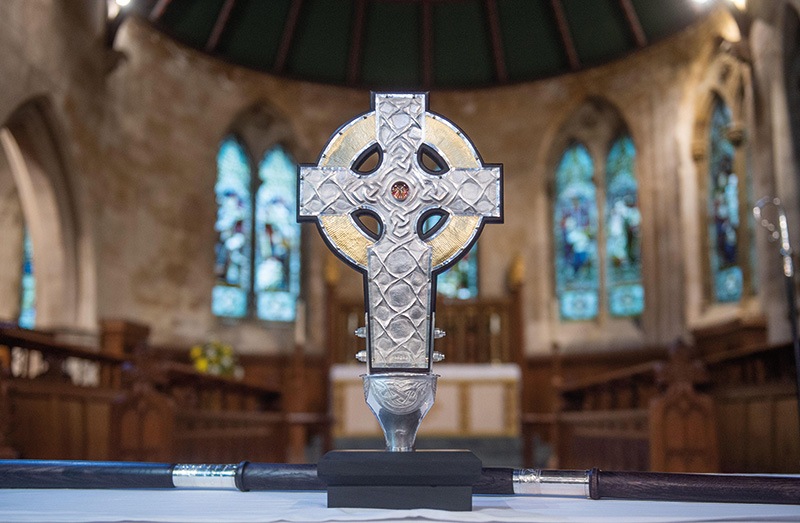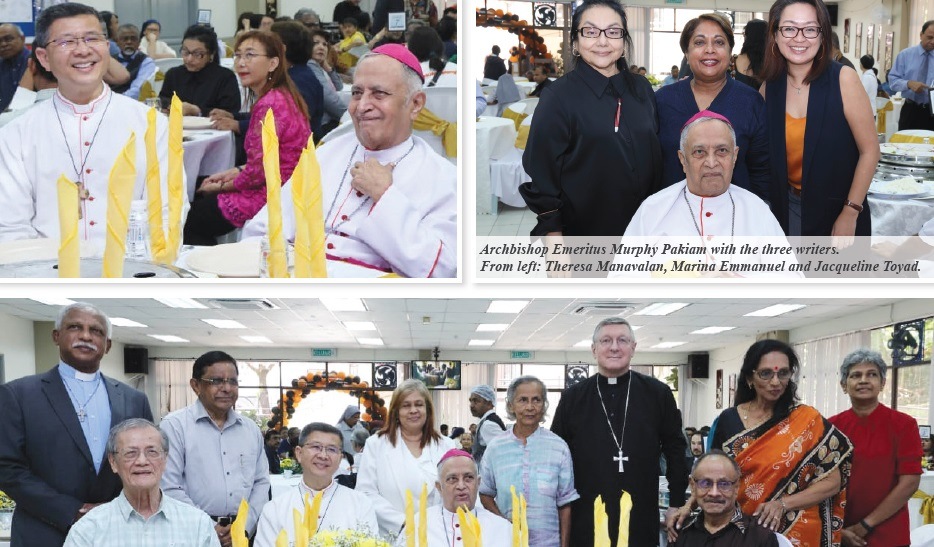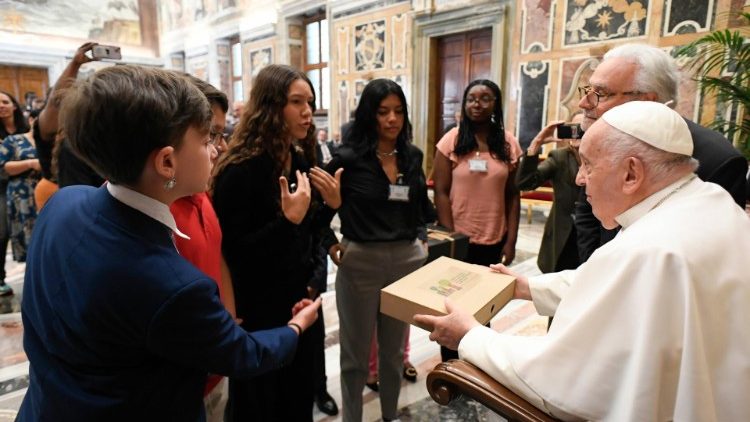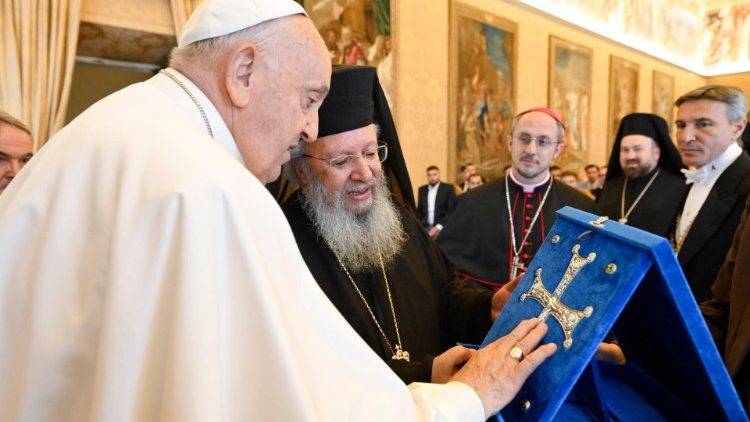
Charles’ centenary gift to the Church in Wales (Photo: Alamy/PA, Peter Powell)
by Catherine Pepinster
May 7 2024
King Charles was crowned on May 6 last year. The story of how the new monarch and Supreme Governor of the Church of England was to process through Westminster Abbey behind a cross containing a relic of the True Cross gifted by the Pope can now be told.
Back in 2022, The Tablet devoted a short paragraph to an intriguing visit by the then Prince of Wales to Archbishop’s house, home to successive Archbishops of Westminster, for a May reception to mark the centenary of the Society of St Augustine. What had brought the guest of honour there, we wondered, to salute the work of the society which funds the upkeep of Cardinal Vincent Nichols’ home? Perhaps it was because the Duke of Norfolk is the society’s patron – and the Duke of Norfolk is also Earl Marshal, the man responsible for organising a monarch’s coronation. While at the time Elizabeth II was in the midst of her Platinum Jubilee celebrations, her great age and her ill health meant that a new reign was not far off – no doubt giving the Duke and the Prince plenty to talk about. Four months later, on Sep 8, the Queen died at Balmoral, and was succeeded by her son, Charles, Prince of Wales, as King Charles III.
It turns out that reception was vitally important for another reason. It sowed the seeds for something quite remarkable. At the coronation, the new monarch and Supreme Governor of the Church of England, who would swear to uphold the Protestant religion, processed through Westminster Abbey behind a cross containing a gift from Pope Francis, a relic of the True Cross. How this extraordinary scene came to happen is a tale involving that reception, the Order of Malta, the Goldsmiths’ Company, a Welsh poet, a barrister; and Catholic and Anglican archbishops, the Chapel Royal at St James’s Palace and the Vatican.
While a chance conversation during that Society of St Augustine reception was key to the unprecedented intervention of the Pope in a Protestant monarch’s crowning, the story of the cross actually began more than 700 years ago with King Edward I. Has a king ever been so acquisitive? This was the monarch whose forces took the Stone of Destiny from the Scots. It has been an essential part of the coronation of every English, and later British, monarch since. Also known as the Stone of Scone, the stone is placed within the coronation chair for the coronation. In 1996 it was returned to the Scots, but it was brought back to London for King Charles’ crowning a year ago.
Edward also plundered an item from Wales in 1282 that was as precious to the Welsh as the Stone of Destiny is to the Scots: the Cross of Wales, or Groes Naid. This sacred item, belonging to the royal Welsh House of Gwynedd, is believed to have been a reliquary of the True Cross. But it could never, like the Stone of Destiny, be restituted, for it fell victim to the iconoclasm of the Reformation. In 2019, the then Prince of Wales suggested that he might give the Anglican Church in Wales a cross to mark its centenary that would reference the lost Croes Naid. Fast forward through the Covid lockdown years to 2021, when the Goldsmiths’ Company hears of the Cross of Wales project and offers to organise the design and production. The silversmith Michael Lloyd was commissioned to design the cross, in silver, using an image of the lost cross from a ceiling boss in St George’s Chapel, where the original had been kept for hundreds of years after Edward I took it from Wales.
Until then the new cross was very much a project involving the Prince of Wales and the Church in Wales. But during that May 2022 reception at Archbishop’s House, the Welsh poet Grahame Davies, who was working for the Prince of Wales as his deputy private secretary, chanced to meet the newly appointed Catholic Archbishop of Cardiff, Mark O’Toole, and the chancellor of the Order of Malta, Professor Mark Watson-Gandy. WatsonGandy, a barrister, a donor to Catholic causes and with a coat of arms that bears the motto Esto quod esse videris (“Be that which you seem to be”), actually seems to be a man of many parts. As well as a Knight of Malta, he is a Knight of St Gregory the Great and of the Constantinian Order, as well as holding the feudal Scottish title of Baron of Myrton.
When later Watson-Gandy learned more about the Cross of Wales project, he suggested that it might be possible for relics of the True Cross to be inserted into it – making it an even more accurate replica of the original Croes Naid – and this would be possible with the help of the Vatican. This turned out to be the case. A simple idea about a replica cross for the Church in Wales grew into a finely crafted cross thanks to the Goldsmiths’ Company, and then into a very special, sacred item, thanks to the Vatican.
In November 2022 when Charles – by now King – visited the Goldsmiths’ Centre and hallmarked the newly crafted Cross of Wales, the eagle-eyed might have spotted that the dignitaries alongside him included Mark Watson-Gandy and George Stack, Archbishop Emeritus of Cardiff. The Goldsmiths’ Company said at the time that the new Cross of Wales would be shared by the Church in Wales and the Catholic Church, but those close to the project knew more. The Catholic Church was represented so prominently because Pope Francis was gifting relics to the project.
With less than a month to go before Coronation Day, the relics arrived from Rome during Holy Week, and were taken to the Chapel Royal at St James’s Palace where they were presented to the Royal Household by a representative of the nuncio. That same day, they were transported to the Goldsmiths’ Centre, and Michael Lloyd enclosed the relics into the centre of the cross behind a rose crystal gemstone. By then, Pope Francis and his advisers would have been well aware that this cross was to be used at the coronation. And while the idea to use of the Cross of Wales during the coronation first came from the ecclesiastical household – the Chapel Royal – any decision had to be signed off by the King, so ultimately it was the King’s decision.
The message of the cross, inscribed on its reverse side, is taken from the final sermon of St David, patron saint of Wales: Byddwch lawen, cadwch y ffydd, gwnewch y pethau bychain (“Be joyful, keep the faith, do the little things”). But the cross conveyed another message, too: that the differences between the papacy and the English, later British monarchy, first seen with the break from Rome by Henry VIII, are being put aside for a new era of friendship. A friendship that the Cross of Wales, used regularly in Wales by both Catholics and Anglicans, now symbolises. – The Tablet









